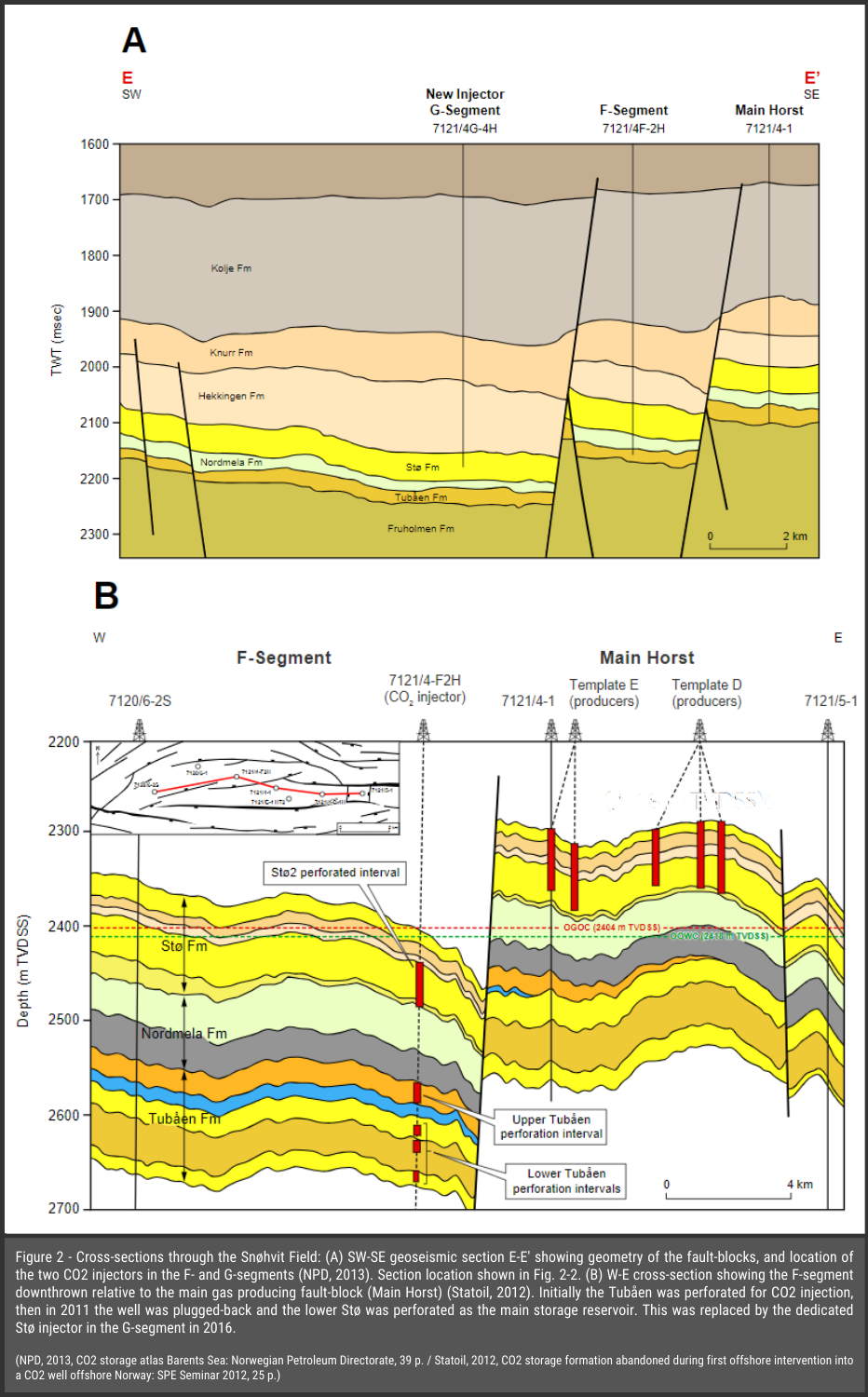The Snøhvit CCS Project
The Snøhvit CCS Project
Analogue Spotlight
From its initiation in 2008 to 2019, the Snøhvit CCS project successfully stored 6.5 MMt of CO2 within the Tubåen (1.1 MMt) and Stø (5.4 MMt) formations (Fig.1, Fig. 2).
Between 2008 and 2011, CO2 was injected through a single well (F-2H) into the Tubåen Formation deltaic to shallow-marine sandstones, but rapid pressure build-up of ~943 psi over initial reservoir pressure meant that the storage capacity of this formation was called into question (Fig. 3). 4-D time-lapse seismic monitoring confirmed that the CO2 was contained within a small isolated channel thus causing the rapid pressure increase. An alternative option was thus required, and the back-up plan was initiated.
Following the cessation of CO2 injection into the Tubåen Formation, injection into the overlying Stø2 layer of the Stø reservoir began using the same injection well. With a storage capacity of ~24 MMt, initial injection began at 60 t/day. This increased rapidly and by November 2011 it had reached 2150 t/day. As injection continued reservoir pressure steadily declined to near-hydrostatic conditions.
In 2016, a new injector (G-4H) was drilled into the Stø reservoir, in a separate fault compartment to avoid contamination of the produced gas. The original injector was shut-in.
Another alternative scenario for carbon storage would involve additional injection into the Tubåen, Stø, and Nordmela formations, giving a potential storage resource of 90 MMt.



